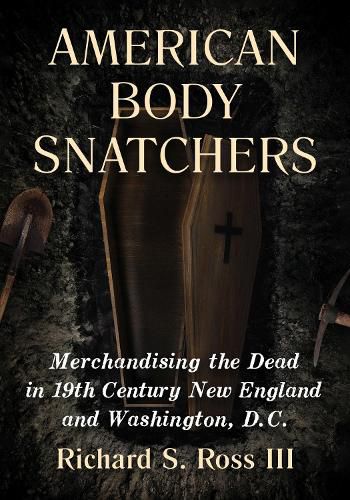Readings Newsletter
Become a Readings Member to make your shopping experience even easier.
Sign in or sign up for free!
You’re not far away from qualifying for FREE standard shipping within Australia
You’ve qualified for FREE standard shipping within Australia
The cart is loading…






This title is printed to order. This book may have been self-published. If so, we cannot guarantee the quality of the content. In the main most books will have gone through the editing process however some may not. We therefore suggest that you be aware of this before ordering this book. If in doubt check either the author or publisher’s details as we are unable to accept any returns unless they are faulty. Please contact us if you have any questions.
At the beginning of the 19th century, New England physicians teaching anatomy in their medical schools expected students to have hands-on experience with cadavers. The only bodies that could be dissected legally were convicted murderers, and this led to a lack of sufficient bodies for study. Doctors and their students in both the established and newly emerging medical schools of 19th century New England turned to removing the dead from graveyards and cemeteries for dissection. The first medical school in Washington, D.C. was founded in 1825, headed by a Massachusetts physician convicted of body snatching, and made the practice commonplace in the area.This history of body snatching in the 19th century focuses on medical schools in New England and Washington, D.C., along with the religious, moral, and social objections during the time. With research from contemporary newspapers, medical articles, and university archives, topics such as state anatomy laws and their effects on doctors, students, and the poor--who were the usual victims--are covered, as are perceptions of physicians and medical schools by the local communities.
$9.00 standard shipping within Australia
FREE standard shipping within Australia for orders over $100.00
Express & International shipping calculated at checkout
This title is printed to order. This book may have been self-published. If so, we cannot guarantee the quality of the content. In the main most books will have gone through the editing process however some may not. We therefore suggest that you be aware of this before ordering this book. If in doubt check either the author or publisher’s details as we are unable to accept any returns unless they are faulty. Please contact us if you have any questions.
At the beginning of the 19th century, New England physicians teaching anatomy in their medical schools expected students to have hands-on experience with cadavers. The only bodies that could be dissected legally were convicted murderers, and this led to a lack of sufficient bodies for study. Doctors and their students in both the established and newly emerging medical schools of 19th century New England turned to removing the dead from graveyards and cemeteries for dissection. The first medical school in Washington, D.C. was founded in 1825, headed by a Massachusetts physician convicted of body snatching, and made the practice commonplace in the area.This history of body snatching in the 19th century focuses on medical schools in New England and Washington, D.C., along with the religious, moral, and social objections during the time. With research from contemporary newspapers, medical articles, and university archives, topics such as state anatomy laws and their effects on doctors, students, and the poor--who were the usual victims--are covered, as are perceptions of physicians and medical schools by the local communities.